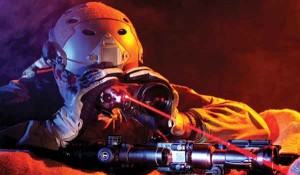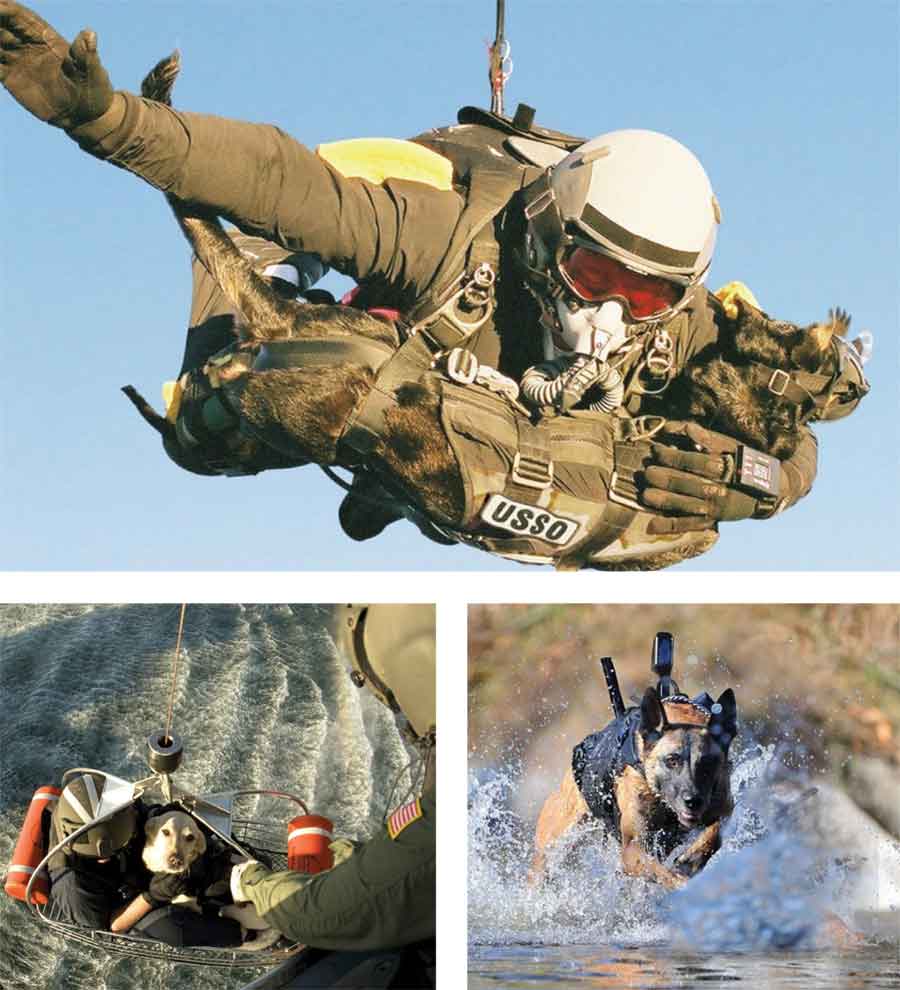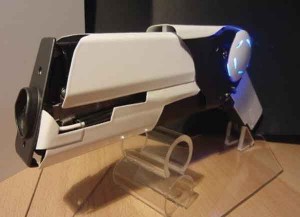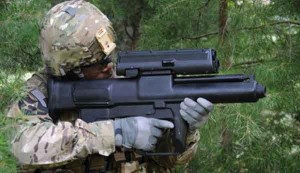The Battlefield Management System (BMS) and F-INSAS programs are being developed concurrently; BMS under Information Systems and F-INSAS under the Infantry. The BMS was conceived at battalion/regiment level pan army (including for the infantry) and comprises communication, non-communication hardware and software. The lowest level to which the system will be connected is the individual soldier/weapon platform and highest level with the Battalion/Regiment Commander. The system will be further integrated with the Tactical Command, Control, Communications and Information (Tac C3I) System through the Command Information Decision Support System (CIDSS).
In terms of clothing and bullet proof jackets, the quality that DRDO provides is generally first from the rock bottom…
The Directorate General of Information System (DGIS) is charged with facilitating transformation of the IA into a dynamic network-centric force achieving information superiority through effective management of information technology. Quite logically, Phase III of F-INSAS (Computer Sub System, Radio Sub System, Software and Software Integration) should be a part of the BMS. However, the Infantry remains adamant that Phase 3 of F-INSAS should be developed by Infantry and not be a part of BMS. A separate project of software and communication integration by Infantry is retrograde, delaying overall net-centricity pan army, would incur additional avoidable costs and defeat the very purpose that the DGIS was created for, considerable work in the fields of GIS and applications having already been done by the latter in addition to completing Phase I of THE CIDSS and Battlefield Surveillance System (BSS).
Squabbling on delimitation between the BMS and F-INSAS cost a delay to Phase I of the BMS by almost a year. The infantry has been haggling that Phase III of F-INSAS (Computer Sub System, Radio Sub System, Software and Software Integration) be developed by them in full or at least till company/platoon level. Since F-INSAS is to incorporate situational awareness and GIS, it amounts to not only ‘re-inventing the wheel’ but will require yet another project to integrate the F-INSAS with the BMS implying infructuous and avoidable additional expenditure and time. We have not learnt from similar situations in foreign armies.

Psychotropic (Zombie) Gun under development in Russia and must be also under development in countries like China. UK etc.
In the UK, FIST program for Infantry was thought of for ten years after the BOWMAN program. In the latter, the C2 system went down to half squad. The Platoon Commander carries both the BOWMAN and the FIST. In case the section has to function independently the Section Commander carries both the BOWMAN and FIST. Separate FINSAS and BMS could lead us to similar situations which should be unacceptable. FBCB2 was implemented in 1998 in US Army. Land Warrior was started late, prototyped in 2005 and foreclosed in 2007, leading to Future Force Warrior (FFW) Program being started. Land Warrior did not integrate with FBCB2. As a result, FBCB2 is being replaced by Joint Battle Command System (JBCS) which goes down to the soldier.
The new attire will enable the troops to carry extra load and resist the impact of nuclear, chemical and biological warfare…
Significantly, the FFW program is looking only at the soldier ensemble to include weapon, protection and integrated helmet. The future soldier program will not have a radio of its own but JTRS Cluster 5 Radio (Soldier Radio), common to all US soldiers and a common SA and computer from JBCS. The helmet will have a helmet-mounted display, earphones and microphone. The system of systems are about integrating systems and empowering the user. The soldier is only a part of the network; he is not responsible for the network. Separate F-INSAS and BMS programs will lead to issues related to inter-operability and integration of systems as the systems may be developed by different agencies using different platforms.
Maintenance of disparate systems would be required and it would be difficult to achieve the test-bed of an integrated Combat Group or Infantry Battalion Group. It would be prudent for the Infantry to only develop Phases I and II of the F-INSAS, leaving development of Phase III as part of the BMS especially since the latter also caters for Mechanised Infantry, both in mounted and dismounted roles.
Future
Continuous focus required in relation to the infantryman should be to decrease his load, increase his effectiveness and significantly improve his effectiveness. There is need to not only hasten the F-INSAS project but also holistically review whether there is a need to go beyond and meet the soldier modernisation of the entire Security Sector; all Military, Para Military Forces (PMF), Central Armed Police Forces (CAPF) and Police units charged with counter-insurgency and counter-terrorist operations because asymmetric threats need to be met in integrated fashion at the national level. Then within the army, the BMS is catering for the digitised battlefield at regiment/battalion level pan army but the BMS does not cater for Weapons, Body Armour, Clothing and Individual equipment, which actually should be a part of soldier modernisation pan army since in counter-terrorism and counter-insurgency, invariably troops other than infantry also get involved in operations both inadvertently and/or advertently. We should, therefore, be looking at across-the-board soldier modernisation concurrent to the infantry soldier.
Mini UAVs (MAVs) and medium range surveillance devices are planned for a deeper look into enemy territory by the infantry but are apparently delayed on account of these being developed by the DRDO. Hopefully, the development will not be as slow and hiccupped as the Nishant UAV. The US forces have been operating the RQ 11 MAV in Afghanistan successfully that fits in a backpack. The French also introduced a MAV for their Special Forces in 2009. It may be prudent for our infantry to try out Commercial Off The Shelf (COTS) MAVs concurrent to indigenous developments.
Our infantry is also contemplating provision of Patrol and Sniffer Dogs to units/sub units. For decades now we have been using dogs from Army Dog Units for simple patrolling and sniffing tasks. We should be looking at specialisation of the type that is in the US forces; war dogs as buddies even trained in aerial delivery. Our Special Forces and airborne forces need to take a lead in this.
Mini UAVs (MAVs) and medium range surveillance devices are planned for a deeper look into enemy territory…
There is also a need to start developing futuristic weapons. The New US XM25 Rifle uses radio-controlled smart bullets and the gun-sight uses a Laser Range Finder. The DRDO has developed the Laser Dazzler that will impair vision temporarily to control unruly crowds and there are plans to develop ADITYA – a vehicle mounted gas dynamic laser-based directed energy system as technology demonstrator plus a 25-kilowatt laser system under development to hit a missile in terminal phase at a distance of five to seven kilometres.
But we should also be looking at hand-held weapons. The US already has the 1 MW Laser Pistol and the US Army is to induct Laser Assault Rifles in the near future. Russia has announced the development of the Zombie Gun (psychotropic weapon) for mind control and obviously countries such as US, China and UK will not be lagging behind.
It is important to note that in 21st century conflict situations not only will operations be increasingly inter-agency involving greater applications of ‘all elements of national power’, but our adversaries will also endeavour to employ hi-tech irregular forces against us. If we can achieve soldier modernisation within the Security Sector and network this cutting edge at the national level, we can be sure to win future conflict situations. Modernisation of the infantry has not been given its due in past decades.
This must be treated as an ‘emergent’ requirement in consideration of the emerging threats within and surrounding the country especially considering the rate at which terrorists are achieving sophistication.








A blog named Tarmac 007 has a caption Whoever said pen is mightier than the sword, clearly has never faced automatic fire — Gen douglas Macarthur and I think the Gen is right talking those talking about palm tops,sensors and connected crap have never faced automatic weapons just look at the soldier in the article showing various gadgets looks like a shopkeeper — what is required is the ABILITY TO SEE BLOOD AND DRAW BLOOD — we teach ahinsa parmo dharam don’t eat meat or drink — SOME TEACH KSHMA VIRASYA BHUSHNAM — ONE CANNOT OPENLY SACRIFICE GOATS ETC TO JOGMAYA –WHEN WILL YOU SEE FIRST BLOOD ON THE BATTLE FIELD THEY WOULD BE WETTING THEIR PANTS — SEE A BUFFALO (vegetarian) AND A LION (carnivorous) FIGHT BUFFALO IS LARGER AND STRONGER BUT THE SMALLER LION ALWAYS WINS – YEH BANIO KA KHEL NIHI HAI — ITS INVOLVES BLOOD GORE COURAGE AND RUTHLESSNESS ALL GADGETS DHARE RAH JAYENGE WHEN THE BODY PARTS FAIL TO MOVE BEFORE enemy FIRE
The quality of your articles is awesome that is best reason for me to read this post.
There is nothing new in this article.” old wine in a new bottle”. I still remember a paper report that Hemant Karkare was wearing a bullet- proof jacket when he was killed by terrorists when he was sitting inside a Toyota Qualis . The question is: will this really save the soldiers from the bullets of AK – 47 rifle, missiles and snipers ? Ceramic shield will help to some extent. But it is heavy and restricts the movement of the soldier. But no bullet- proof jacket can save a soldier from snipers. This will be useful when fighting against terrorists and Naxalites, but not in real war. Majority of the demands submitted by the defense services are made without any proper study. Whether any study has been made to know how many soldiers’ lives have been saved by the use of this jacket all over the world?Army has to use mechanized infantry, instead of soldiers marching or fighting on foot. Our Army still think about conventional war like soldiers marching or fighting on foot. We should start manufacturing hundreds of Armored Personnel Carriers. This will create lot of employment. Pakistan is trying to purchase large numbers of Armored Personnel Carriers ( used in Afghanistan by USA). Majority of Army officers are still thinking about assault rifles, field guns and bullet proof jackets. This shows lack of knowledge on modern warfare. . I have made an extensive study on defense requirement. Assault rifles are use less against armored personnel carrier. This is a subject requires constant study to know what is happening in the world.One has to spent two to three hours in front of a Computer to collect all the news available in the net. I have no experience in the Army . But one can get lot of information from internet. Please read the report given below. :-
“There’s a simple reason why the militants are using Humvees and other armored vehicles as rolling bombs,” Naylor reports. “Their protective armored plating prevents defenders from killing the trucks’ drivers before the militants can detonate their loads, while the vehicles’ capacity to carry enormous amounts of weight means the Islamic State can sometimes pack in a ton of explosives.” . The major lacuna in any Army in the world is delay in the war operation due to known and unknown reasons. The retreating soldiers usually mine the area or destroy bridges to stop the forward march of the attacking Army. to get time for regrouping . One has to think how to reduce this kind of delays. Pakistan is well protected with many rivers and canals particular in Lahore sector. Why are we trying to follow other countries. There is no chance of hand to hand fight in a modern warfare . Kindly ready my comments on “ignorance of military matters in modern India” By: Col Gopal Karunakaran | Issue: Net Edition | Date: 29 Aug , 2015
There is a saying it always comes back at / to you had they bought good stuff some safety would have been provided but for the spurious products purchased by the way govindanji no equipment is fool proof even tank armour can be penetrated why blame DRDO or any one
IMO, the problem is manifold; One, DRDO’s PR machinery is almost useless… if you notice, most of the times, it is the Directors who arrange for information distribution and do the work of the PROs, while they go missing.Secondly, there are enough Army and Air Force officers, both serving and retired who are more than willing to shoot their mouths off about the DRDO projects and gain some sound bytes. DRDO scientists, on the other hand, are more reserved, and do not give statements often. Added to that, there are more highly ranked army officers than there are Defence scientists. The flow of information is obviously more from the Army and IAF side.Thirdly, most defence correspondents have little or no knowledge on defence information, which makes them unsuitable for analysis or objective reporting. It is obvious then that they would just report from press releases or what the retired officers talk about. Added to that is the extremely strong and influential arms lobby from foreign firms who would stand to gain from DRDO getting bad press.And when writers like Rajat Pandit and Mr. Aroor criticize the DRDO without reporting their side of the story, it obviously builds resentment in the DRDO, and I wouldn’t blame them for their attitude towards the press corps.In fact, if the press bashing of DRDO continues, I wouldn’t venture near any missile test. It might just ‘veer’ off course and accidentally slam into the press box :)…. after all the bad press DRDO gets, a failure wouldn’t be so uncommon would it??
Knowing well the working of RDSO in the Railways, I support you . DRDO in Army is like RDSO. I have not come across any complaint from Navy against DRDO.. Smt Indira Gandhi adopted the correct policy and she gave importance to missiles. This has saved the country and the Army from a similar situation like 1962 war in future. After the death of Smt. Indira Gandhi Army could not purchase any modern equipments. The problem in the Army is the Ego and superiority complex among the majority of Army officers. More over they still think about conventional war.When we have various missiles why do we require Bofors or M777 howitzer guns. Since the development of weapon locating radar no country expect India is interested in field guns. We should have large number of helicopter gun ships to destroy enemy tank.So Army officers line of thinking should change. We should have large number of Armoured personnel carriers. Why can’t we think of giving battery operated vehicle to the Jawans guarding the LOC where aware possible. It can be charged during day time using Solar panels. They will be able to cover more area and also carry better weapons. Any new item in the Army will create lot of employment in India.
The Infantry is ultimately the final unit of the Army to be enmeshed in Land warfare & it needs a expansion,Modernisation & a Proper integration with Air Force. Sadly, Our DRDO is very lethargic,inefficient & full of bureaucratic inertia.